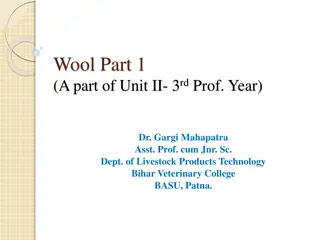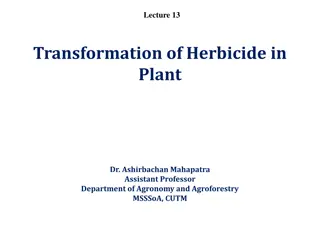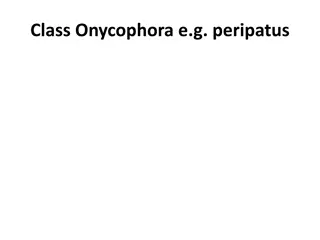Understanding the Hair Growth Cycle and Structure
Hair is a protein filament that grows from follicles in the skin, playing essential roles in thermal regulation, protection, and facilitating perspiration evaporation. The hair consists of layers like the medulla, cortex, and cuticle, each with specific functions. Hair growth follows a cyclic proces
4 views • 23 slides
Understanding Transpiration in Plants: Importance and Mechanisms
Transpiration is the process in which plants lose water vapor through their aerial parts, playing a crucial role in their overall functioning. This loss of water occurs mainly through stomata, lenticels, and the cuticle of leaves and stems. Different types of transpiration like stomatal, lenticular,
0 views • 19 slides
Understanding the Physical Structure of Wool Fiber
Wool is a natural protein fiber with a unique structure composed of a cortex and cuticle, lacking a medulla. Its physical structure includes the cuticle as the outer protective layer, cortex with corticular cells, cell membrane complex, macro-fibrils, matrix, micro-fibrils, and helical coils. The st
1 views • 17 slides
Herbicide Absorption and Translocation Mechanisms in Plants
Herbicides need to be effectively absorbed and translocated within plants to interfere with physiological and biochemical processes. Soil-applied herbicides are absorbed by roots, shoots, and seeds through different mechanisms, while foliage-applied herbicides enter through the cuticle, stomata, and
0 views • 7 slides
Overview of Class Onycophora (Peripatus) Characteristics and Traits
Class Onycophora includes organisms like Peripatus, characterized by features such as possessing a thin cuticle, soft muscular body wall, scattered spiracles, cilia in genital organs, and wormlike body structure with unsegmented legs. They exhibit separate sexes, direct development, and possession o
0 views • 100 slides
Adaptations of Xerophytes in Different Habitats
Xerophytes, plants adapted to dry habitats, possess specific adaptations to prevent excessive water loss such as sunken stomata, presence of hairs, thick waxy cuticle, and rolled leaves. These adaptations help xerophytes thrive in arid conditions, maintaining humid air around stomata and maximizing
0 views • 13 slides





